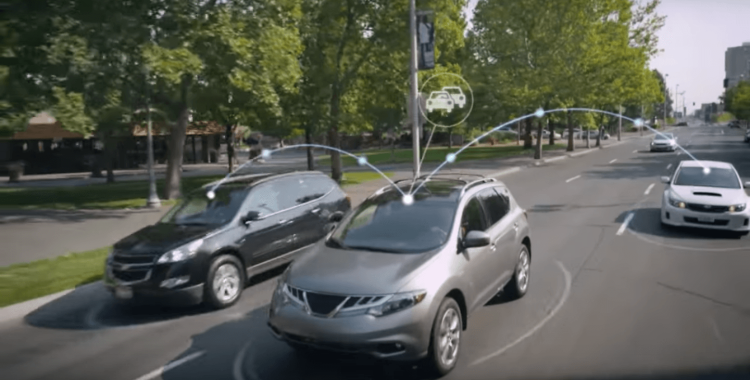AT&T has teamed up with Delphi and Ford on an initiative to develop a communication network that will allow vehicles to converse with their surrounding environment. With this “vehicle-to-anything” (V2X) framework, the idea is to improve safety, security, traffic congestion, and more.
“We’re moving from today’s connected car to a fully autonomous vehicle,” said Chris Penrose, president of AT&T’s Internet of Things solutions. “Our work with Delphi and Ford will deliver safer, more secure, cost-effective, and efficient solutions to do this.”
Federal regulators have bought into the idea of vehicles talking to each other as a way to reduce crashes and potential fatalities. Using dedicated short-range communication (DSRC) technology, cars would transmit data, such as location, direction, and speed, to nearby vehicles. We’ve already seen an instance where the autopilot system on a Tesla reportedly predicted an accident ahead of it, so it’s feasible that having a similar system, absent full self-driving capabilities, will be beneficial to drivers.
AT&T, Delphi, and Ford are jointly researching ways to monitor traffic conditions and notify drivers of approaching vehicles and events. While Ford provides the in-car integrations, AT&T was tasked with developing the software for the analytics platform and wireless connectivity. Delphi provided the on-board module to allow the vehicle to communicate with its surroundings. So, if a car somewhere down the road deploys an airbag or turns its hazard lights on, those signals could be distributed and warn vehicles nearby to take precautionary measures or avoid the scene.
“This technology has the ability to drastically reduce accidents and save lives,” said Delphi vice president of engineering Jim Zizelman in a statement. “DSRC and LTE both have a unique role to play. The combination will help accelerate the adoption of V2X overall.”
The general public may not be able to afford a self-driving car anytime soon, but if there is a way for all of us to have DSRC technology included in our vehicles, it could potentially save lives.
While it’s interesting that AT&T, Delphi, and Ford have worked on this communication platform together, the platform itself appears to still be in its earliest stages, so it may not be available en masse for some time.


